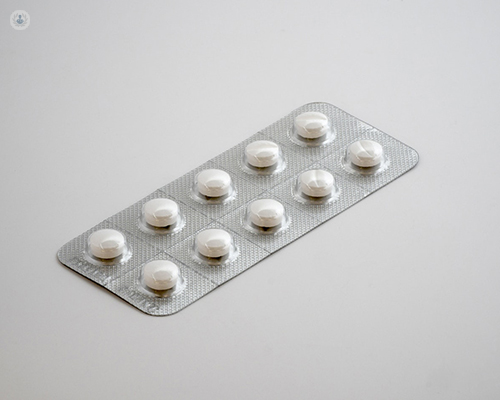Opioid crisis: addiction to pain relief medication
Autore:The number of people using opioids in the UK at any one time is largely an unknown, but what we do know is that the prescribing trend over the last ten years for these types of drugs for non-cancer pain has increased dramatically. This is a particular problem as we're starting to learn that long-term use of these drugs causes real harm and problems for the majority of individuals.
We’ve asked pain management specialist Dr Giancarlo Camilleri to explain the current “opioid crisis” that some patients are facing and how chronic pain can be better managed to prevent addiction to pain relief medication.

What are opioids?
Opioid medication is essentially any medication that works on the morphine receptors in our body. Some people may be alarmed to learn that some of the drugs they're taking for their pain management actually fall in this category. We generally define opioid drugs as weak or strong medication preparations.
The weaker ones include codeine phosphate, dihydrocodeine and tramadol.
The stronger morphing preparations include morphine as a tablet itself or as a liquid, oxycodone, buprenorphine and fentanyl.
Why are opioids prescribed?
Opioids are prescribed for the management of pain of some sort. There are certain conditions where doctors might consider using opioid medications, but these are very rare and include the management of certain respiratory disorders or cardiovascular issues.
The type of pain could be what we term acute pain, end-of-life or cancer pain, or for chronic long-term mechanical pain.
Are they effective in managing acute and chronic pain?
Acute and chronic are terms often used by patients to try and define the severity of their symptoms. Medically, we use these terms to define time. An acute episode, or acute pain, lasts up to about three months and if it lasts longer than three months, we define it as chronic.
With regards to the use of opioid medications, there's very good evidence for the use of these medications in an acute episode. An example would be after trauma or a broken bone, or after surgery.
Interestingly, there's very little evidence that these drugs are helpful in chronic long-term pain management, but what we do know is that the use of these drugs in the long-term can be extremely harmful indeed.
How does addiction occur?
Nobody truly understands how addiction occurs to a substance or a drug. We do know that patients bring with them certain behavioural characteristics that might predispose them to develop an addiction. That includes known addiction to certain substances such as alcohol or smoking.
Other elements are important such as a background of anxiety or depression and these traits do predispose an individual to develop an addiction to drugs such as opioids. We also know that complex neurological changes occur, such as an increase in the development of certain neurotransmitters or changes in the brain circuitry that predisposes an individual to the development of addiction.
The important message here is that even if you don't believe that you have these behavioural traits, these neurological changes means that everybody is at risk of developing an addiction when placed in front of these drugs for a long period of time.
What are the possible alternative treatments for chronic pain?
The fact that an individual has chronic pain means that there's no simple mechanical fix for their pain. Often patients bring baggage with them. Their thoughts about their pain changes, their behaviour changes, the way they walk or partake in activities, all change. When dealing with an individual with chronic pain, we look at all of these elements to try and help that patient manage their pain better.
The kind of tools that we use to help patients with chronic pain include psychological strategies, physical therapies, looking at alternative drugs especially discussing around the subject of opioids and for a group of patients injections may also form a part of their management strategy.
How can someone get help for opioid addiction?
The first thing is to identify that you are a high-risk individual for addiction and that can be simply you've noticed you've been taking these drugs for a long period of time or you've changed your behaviour around the use of these drugs. For example, you start to become anxious about going away on holiday or making sure you have enough tablets.
The good news is that for the majority of people, a slow weaning programme is enough to remove yourself from these drugs very safely. For a very small percentage of people, we may need to bring additional help to try and withdraw these medications without the development of withdrawal side effects. This may even require the use of substitution drugs to help bring you off these medications safely.
If you are worried that you or a loved one has an addiction to pain relief medication, do not hesitate to contact Dr Camilleri to discuss your options.


